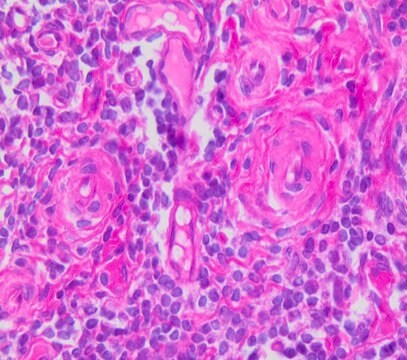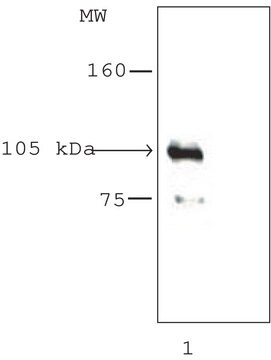H6663
Anti-Histone Deacetylase 7 (HDAC7) antibody, Mouse monoclonal
clone HDAC7-97, purified from hybridoma cell culture
Sinónimos:
Anti-HDAC7
About This Item
Productos recomendados
biological source
mouse
conjugate
unconjugated
antibody form
purified from hybridoma cell culture
antibody product type
primary antibodies
clone
HDAC7-97, monoclonal
form
buffered aqueous solution
mol wt
antigen ~105 kDa
species reactivity
human, mouse
technique(s)
immunocytochemistry: suitable
immunoprecipitation (IP): suitable
indirect ELISA: suitable
microarray: suitable
western blot: 0.25-0.5 μg/mL using recombinant protein from embryonal kidney 293T cells over-expressing human HDAC7
isotype
IgG1
UniProt accession no.
shipped in
dry ice
storage temp.
−20°C
target post-translational modification
unmodified
Gene Information
human ... HDAC7(51564)
mouse ... Hdac7(56233)
General description
Application
- chromatin immunoprecipitation
- immunoblotting
- immunocytochemistry
- immunoprecipitation
- ELISA
- immunocytochemistry
- immunoprecipitation
- indirect ELISA
- microarray
- western blot at a concentration of 0.25-0.5μg/mL using cell extracts of human embryonal kidney 293T cells expressing recombinant human HDAC7
Biochem/physiol Actions
Physical form
Disclaimer
¿No encuentra el producto adecuado?
Pruebe nuestro Herramienta de selección de productos.
Storage Class
10 - Combustible liquids
wgk_germany
nwg
flash_point_f
Not applicable
flash_point_c
Not applicable
Certificados de análisis (COA)
Busque Certificados de análisis (COA) introduciendo el número de lote del producto. Los números de lote se encuentran en la etiqueta del producto después de las palabras «Lot» o «Batch»
¿Ya tiene este producto?
Encuentre la documentación para los productos que ha comprado recientemente en la Biblioteca de documentos.
Nuestro equipo de científicos tiene experiencia en todas las áreas de investigación: Ciencias de la vida, Ciencia de los materiales, Síntesis química, Cromatografía, Analítica y muchas otras.
Póngase en contacto con el Servicio técnico







